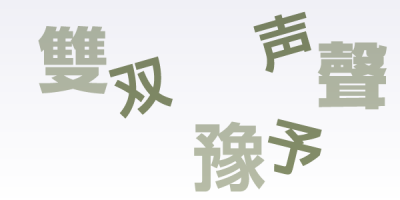
Character is intimately related to ethics. By considering the advantages and disadvantages of the various behaviors of individual characters, we can illuminate one aspect of social ethics.
However, it is mistaken to think that contemplating ethical explanations will make thinking of character unnecessary. We will look at some concrete examples of “ethical explanations” below.
Previously (in part 4), we discussed the example of a person who was thoroughly ingratiating when dealing with the CEO of his client company, while intimidating his subordinates, and how, upon observing these two different behaviors, both the boss and the people watching him would feel uncomfortable. Even ignoring the fact that these two characters—“ingratiating to the influential” and “bullying the weak,” are mismatched—it is a fact that in Japanese society neither of these traits is highly regarded. So it seems sufficient to consider the ethical explanation, namely that such a person is simply a bad person.
In part 4, we also considered the two lovers sweetly cooing to each other: “Nee, ohiru nanni shuruu?” “Nn, wakannai deshuu.” Even without resorting to character, these two can also be thought of violating social ethics (by behaving sloppily in public). As for the slight shock I felt upon my friends getting married and procreating (part 4), it too was the result of their private lives becoming, in a sense, public.
The same is true for the man in Fumiko Hayashi’s Hourouki, who despite acting so bravely when living with his fiancée, telling her “trust me,” upon visiting his parents to announce his marriage, was characterized by his “faltering gaze” and “timidity,” and couldn’t say “so much as a word” to his parents (part 6). Here too, an ethical explanation of this man’s shortcomings is sufficient; he told his love to “trust” him, but then reneged on his promise by saying not “so much as a word” to his parents.
The reason we hesitate to say to the cool, composed man, “I know you. You actually have a troubled past,” (part 6), is that “attacking people where they’re weak” is also a violation of social ethics.
We can say that Okubatake, who has the unpleasant habit of speaking slowly to emphasize that he is the son of a wealthy family (part 3), is simply ethically in the wrong for flaunting his background. As for my growing a beard and drawing comments from my acquaintances, forcing me to hurriedly explain my reasons (part 4)… that’s none of our concern.
I am not inclined to refute the existence of social ethics themselves. My first thought is that the concept of character is contained within ethics. For example, is a “troubled past” the “weakness” of “the cool and composed man,” or is the problem that the “cool and composed man” is imagined to have always been cool and composed in the past?
On further consideration, couldn’t “a change of character” support the unacceptability of ethical violations? For example, instead of moving forward decisively in breaking off his engagement, the aforementioned man’s transition from a “brave” man to a man described with words such as “faltering gaze” and “timidity,” reinforces the fact that he is not a good person.
For the skeptics among the readers, I will provide one more example. The character Gian from the anime series Doraemon(1) is a “violent person” and a “bully.” One day, he sees a girl crying, so he goes to help her. Surprised, the girl stares at him. How did Gian look at that moment? He was expressionless, as he was not performing any ethically wrong actions. Did he seem proud that he was doing a good deed? No, I think he was slightly embarrassed at being caught out of character. This is precisely what I am trying to get at.
(I will talk about the carpet salesman next time, for sure.)
* * *
(1) A very popular manga and anime series created by Fujiko F Fujio (Hiroshi Fujimoto). The main protagonists are an elementary school student named Nobita, and Doraemon, an earless, blue, robotic cat from the future. The character named here (Gian) is also an elementary school student, in addition to being the neighborhood bully.








